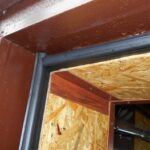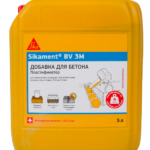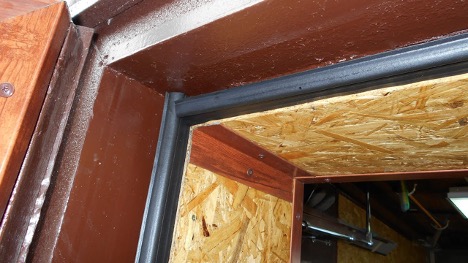Filling a heated floor with water: how to fill and drain, first start
A warm water floor is an effective and economical room heating system. To ensure its correct and safe operation, it is extremely important to correctly carry out the procedures for filling, starting and draining the coolant. In this article we will look in detail at how to fill a heated floor system with water, and also cover the processes of draining the water and starting the system for the first time.
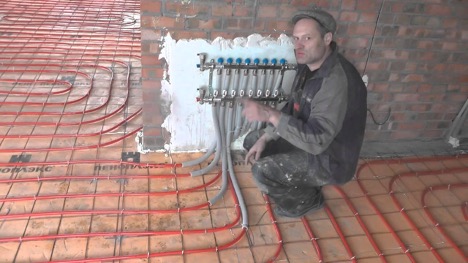
The content of the article
Preparing to fill the system
Preparing to fill your underfloor heating system with water is a critical step in ensuring the longevity and efficiency of your entire heating system. Before you start filling the heated floor with water, you must carefully perform a number of preparatory steps.
The first step in preparation is to conduct a comprehensive system check. This includes inspecting all pipes, connections and valves for possible leaks or damage. It is important to ensure that all system components are installed correctly and have no visible defects. You should also check the functionality of the circulation pump and thermostats, which ensures even heat distribution throughout the system after it is started.
This is followed by cleaning the pipes from possible contaminants and residues of building materials.This prevents the system from clogging and ensures smooth water flow. In addition, it is important to treat the pipes with anti-corrosion agents, especially if the system has not been used for a long time. This helps prevent rust and improves overall system reliability.
Once the system has been thoroughly checked and prepared, you can begin the process of filling the underfloor heating system with water. This must be carried out in compliance with all technical requirements and safety standards to ensure trouble-free and efficient operation of the heating system for many years.
System filling process
The procedure for filling the underfloor heating system begins with a slow supply of water. This avoids sudden pressure changes that could damage the system. It is important to monitor the pressure in the system during filling so that it does not exceed the recommended values.
During the filling process, you should pay attention to the following points:
- Open all air valves to remove air from the system.
- Gradually add water, controlling the pressure.
- After filling the system, check for leaks.
First system launch
The first launch of a warm water floor requires special attention. After the system is completely filled with water and air has been removed from it, you can proceed to the first start. At this stage, it is important to ensure that the circulation pump operates without interruption and that the water temperature gradually increases.
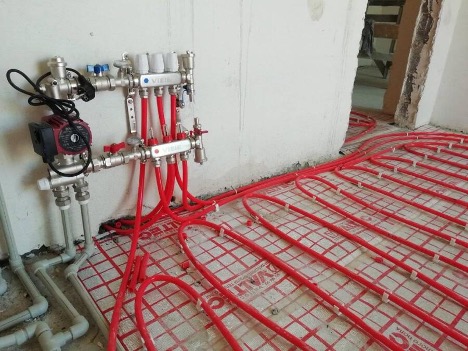
Draining water from the system
The procedure for draining water from a heated floor is a key step in maintaining the system. Proper execution of this process ensures its longevity and prevents possible damage.For efficient and safe draining, you must follow a certain algorithm.
Before starting the procedure for draining water from the system, it is necessary to completely turn off the heating system and allow it to cool. This reduces the pressure in the system and eliminates the risk of burns from hot water. It is also important to turn off the circulation pump to prevent damage to it during draining.
Draining water begins with opening the drain valve located at the lowest point of the system. It is necessary to prepare a suitable container to collect water or provide drainage to the sewer. During the draining process, you should monitor the uniformity of water output and the absence of blockages in the system.
When draining water, attention must be paid to removing air from the system. To do this, you can open the air valves at various points in the system. Careful monitoring of the draining process will help avoid possible problems associated with the formation of a vacuum or blockages.
Once all the water has been drained, close the drain valve and check that all other valves are also closed. This ensures that the system is ready for subsequent filling of the heated floor with water.
Errors during operation
Filling a warm water floor system is a process that requires attention and accuracy. Despite its apparent simplicity, there are a number of errors that can lead to system malfunction or even damage. Let's look at some of the most common mistakes that should be avoided when filling a heated floor with water.
One of the most common mistakes is neglecting to fully check the system for leaks before filling.This can lead to water leaks and, as a result, damage to floors or other interior elements. Before you begin filling, it is extremely important to ensure that all connections are tightly closed and there are no signs of leakage.
Skipping the step of removing air from the system before filling can lead to the formation of air locks. These plugs prevent water from circulating properly in the system, which reduces its efficiency and can cause noise in radiators and pipes.
Filling the system at too high or too low a pressure is also a mistake. High pressure can damage the system, while pressure that is too low will not ensure sufficient distribution of water throughout all sections of the system.
Using water that does not meet the requirements of the heating system can also cause problems. For example, using hard or dirty water can cause scale to form and clog the system.
Not taking the temperature regime into account when filling the system can also be a mistake. It is important to ensure that the water temperature is optimal for your system to avoid heat shock and pipe damage.
By avoiding these mistakes, you can significantly increase the efficiency and durability of your underfloor heating system. Proper filling of the system is a guarantee of its uninterrupted operation and comfort in your home.
Final Recommendations
In addition to the above-mentioned procedures, regular maintenance of the system should be carried out to prevent premature wear and tear and improve operating efficiency. Such measures include checking the pressure in the system, cleaning filters and monitoring the condition of connecting elements.
Finally, it is worth noting that proper filling of the heated floor with water, its startup and maintenance is the key to long and safe operation of the system. Following these recommendations will help ensure that your home is heated efficiently and economically.

